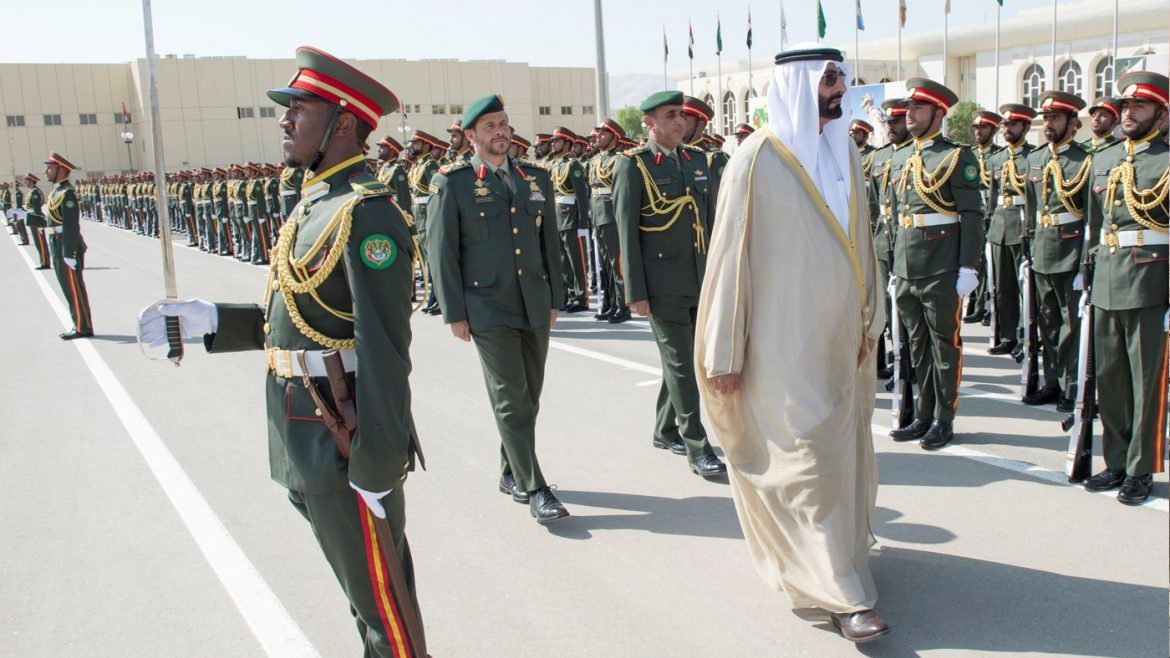Hybrid threats pose a significant security challenge to military institutions, particularly in Western nations, with the United States leading efforts to counter them. Analysts predict that these threats will become one of the most pressing security concerns in the coming decades. Their unconventional nature combines irregular warfare tactics with certain capabilities traditionally associated with advanced military forces, making them a growing factor in global security affairs.

Despite the absence of a universally agreed-upon definition, hybrid threats are often characterised as a dynamic mix of conventional and unconventional forces, criminal elements, and other non-state actors working in coordination to achieve strategic objectives. A 2012 article published in Parameters, the journal of the U.S. Army War College, titled “Identifying Emerging Hybrid Adversaries,” introduced a methodology to assess the evolution of hybrid threats. The study focused on three key variables: organisational maturity, operational capabilities, and environmental complexity. The intersection of these variables, termed the “equilibrium point,” represents the stage where hybrid threats reach their peak tactical and strategic efficiency. This approach enables analysts to evaluate the likelihood of an entity evolving into a fully operational hybrid threat and the conditions that facilitate or hinder such a transformation.
The Complex Nature of Hybrid Threats
Hybrid threats are distinguished by their ability to merge conventional military operations with non-traditional tactics, including cyber warfare, propaganda, irregular militias, economic coercion, and psychological operations. These methods, often cloaked in ambiguity and deniability, make attribution and response highly challenging. Hybrid threats target multiple layers of a nation’s infrastructure, including political, economic, social, and technological systems. Exploiting vulnerabilities is a core characteristic of hybrid threats. This includes targeting technological weaknesses, security gaps, and public opinion through disinformation campaigns. The integration of these tactics allows adversaries to achieve strategic goals without engaging in direct military conflict. Consequently, nations and alliances must develop multi-dimensional defence strategies that enhance preparedness and resilience.
The Development and Capabilities of Hybrid Threats
Hybrid threats do not emerge overnight but evolve gradually through organisational sophistication and enhanced capabilities. They thrive in multi-dimensional operational environments, leveraging a combination of military and non-military components. These include advanced technology, flexible organisational networks, cyber warfare tactics, and information campaigns that allow them to adapt to shifting geopolitical dynamics.
Studies indicate that sustaining hybrid threats requires robust organisational structures, continuous training, stable financial support, and logistical backing.
Moreover, state sponsorship or access to substantial resources is often crucial for their longevity.
Thus, monitoring patterns and behavioural indicators is essential for the early detection and mitigation of hybrid threats.
Case Studies and Tactical Applications
The Russian approach in Ukraine serves as a prime example of hybrid warfare. This strategy involved supporting separatist groups in eastern Ukraine, launching cyberattacks to disrupt critical infrastructure, and conducting disinformation campaigns to destabilise the government. The use of irregular forces, such as militias, further enabled Russia to advance its geopolitical objectives without direct military confrontation. Similarly, during the 2008 conflict with Georgia, Russia combined traditional military operations with non-traditional tactics, including information warfare and cyberattacks, to weaken Georgian resistance and assert control over separatist regions. Hybrid threats occupy a middle ground between conventional armed forces and insurgent groups. On one hand, they employ modern weaponry and structured military training, while on the other, they utilise asymmetric warfare tactics such as cyberattacks and psychological operations. This duality complicates countermeasures for advanced militaries, which often struggle to combat highly adaptable and multi-dimensional threats.
Furthermore, hybrid threats capitalise on vulnerabilities within national infrastructure and security frameworks, making them formidable adversaries even against technologically superior forces. Addressing these challenges requires a comprehensive approach that integrates conventional military capabilities with modern cyber defences, strategic communications, and rapid response mechanisms.
Understanding Hybrid Threats
Recognising and assessing hybrid threats is critical for identifying and countering them before they evolve from emerging risks to fully developed threats. At their core, hybrid threats rely on a mix of conventional military capabilities and irregular warfare techniques. To be considered a true hybrid threat, a group must possess key military capabilities, such as advanced weaponry—anti-tank missiles, portable air defense systems—and sufficient training to use these assets effectively. Without these elements, such groups remain disruptive but lack sustained military effectiveness.
One of the most concerning aspects of hybrid threats is their potential access to advanced weaponry, including weapons of mass destruction (WMDs), particularly in situations involving state collapse. The acquisition of such weapons by hybrid forces could trigger strong military responses from the international community.
State Sponsorship and Proxy Warfare
Many hybrid threats receive financial, logistical, and military support from state sponsors that strategically invest in these groups to further geopolitical objectives. The effectiveness of a hybrid force in achieving strategic goals often determines the level of support it receives. For example, Iran has provided Hezbollah with more advanced capabilities and greater support than it has given Shiite insurgents in Iraq. This discrepancy is due to differences in operational effectiveness and the ability of these groups to utilise resources efficiently.
State sponsors prefer investing in reliable and capable proxy forces. However, the level of support provided is often influenced by external diplomatic pressures and geopolitical calculations. To attract sustained sponsorship, hybrid groups must demonstrate organisational maturity and operational success that justify continued investment.
Organisational Maturity
For a group to evolve into a fully developed hybrid threat, it must exhibit a high level of organisational maturity. This includes effective leadership, internal cohesion, and the ability to command and control forces while maintaining support from both local populations and state sponsors.
Mature hybrid groups can transition from criminal networks or militias into organised insurgencies with the ability to conduct sophisticated operations. However, ideological rigidity can hinder this transformation. Extremist ideologies may limit a group’s ability to adapt, making it less attractive to state sponsors. For instance, Al-Qaeda’s strict ideological stance has made it difficult to control, reducing its ability to secure consistent external support.
During periods of relative calm, hybrid threats often take advantage of the lull to strengthen leadership structures, refine organisational strategies, and enhance combat training. However, internal divisions can weaken hybrid groups, as seen in Chechnya after the First Chechen War (1994–1996), when ideological and factional conflicts led to fragmentation. Similarly, the Sudan People’s Liberation Movement, which led South Sudan to independence in 2011, later struggled with internal disputes that escalated into a civil war, further destabilising the newly formed nation. This led to its ultimate fragmentation into warring militias, plunging the country into civil war.
Thus, the group’s leadership must have a clear strategy for well-defined objectives.

Complex Terrain and Human Geography
The physical and human geography of a conflict zone significantly influences the success of hybrid threats. Complex terrain—such as urban environments, dense forests, or mountainous regions—provides safe havens, limits the effectiveness of conventional military forces, and enhances the tactical advantages of hybrid groups.
For example, during the 2008 Gaza conflict, the Israeli military leveraged urban terrain to isolate Hamas fighters, reducing their operational effectiveness. Urban complexity not only restricted the movement of Hamas operatives but also disrupted their communication and logistical supply lines, impairing their ability to coordinate attacks.
Human geography plays an equally crucial role. Hybrid threats exploit social and ethnic divisions, mobilising support through propaganda and recruitment efforts targeting marginalised or vulnerable populations. In the Vietnam War, the Viet Cong effectively used dense jungle terrain for guerrilla warfare, leveraging local knowledge to ambush U.S. forces and prolong the conflict.
To maintain their effectiveness, hybrid groups must strike a balance between leveraging physical terrain for defensive advantages and managing human geography to secure popular support and recruitment channels.
The Sweet Spot
The effectiveness of a hybrid threat depends on the convergence of three primary factors: military capabilities, organisational maturity, and complex terrain. A hybrid threat cannot reach full operational potential without a balance of these elements. The intersection of these factors creates what can be termed the “sweet spot”—the critical zone where hybrid threats transition from emerging risks to sophisticated security challenges.
Identifying and studying this convergence allows security analysts to anticipate which groups are likely to evolve into mature hybrid threats. By understanding these dynamics, military and intelligence agencies can take proactive measures to disrupt the growth of such threats, either by hindering their organisational development or countering their acquisition of advanced weaponry. Additionally, external actors can influence human terrain complexities by empowering rival factions or political entities within affected regions to weaken hybrid groups’ support bases.
Conclusion
To counter hybrid threats effectively, modern military forces must adopt flexible and adaptive strategies. While hybrid threats are not necessarily more dangerous than conventional threats, they often exploit the element of surprise, taking advantage of unprepared adversaries.
Armies that integrate both conventional warfare capabilities and counterinsurgency tactics are better equipped to confront hybrid threats. Successfully addressing hybrid threats requires a balanced approach that merges traditional military doctrine with unconventional strategies while recognising the complexities of integrating irregular warfare into conventional military operations.●
By: Major General (Ret.) Khaled Ali Al-Sumaiti





















